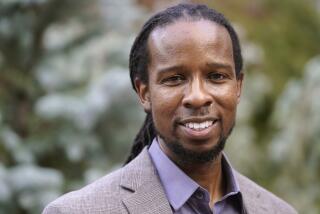PERSPECTIVE ON HEALTH : Surviving Cancer, but Not Stigma : Six million people have overcome what used to be a certain death sentence, but society’s phobias persist.
- Share via
1991 marks the 20th anniversary of the federal government’s “war on cancer.” It also marks 15 years since I was diagnosed with Hodgkin’s disease, the most common form of cancer among young adults. Then, the fear of protracted misery and death implicitly accompanied the diagnosis.
I survived the cancer, but the thought of a relapse was always there. Almost five years later, the nightmare came true. The cancer returned, not once but several times.
Chemotherapy and radiation therapy over the years, and then a bone marrow transplant in 1988, have won me remissions.
Now, at 37, I find myself among a bold new breed of survivors--the first generation of cancer patients to receive comprehensive therapies and to have our recovery predicted with some accuracy.
Surviving is an integral part of our character. It shapes and molds it. Cancer has become a catalyst for our spiritual awakening, providing life with depth and poignancy. We share a new understanding of time, a sense of needing to make every minute count. We have developed new attitudes toward work, pleasure and relationships, while superficial distractions and frivolous people have been filtered out.
In many respects, cancer has been transformed from a fatal disease to a chronic, life-threatening illness. Its cure rate surpasses other chronic illnesses like heart disease and arthritis. Hodgkin’s disease, for example, was a virtual death sentence 30 years ago. Now this cancer of the lymph nodes has an 80% cure rate. In fact, the survival rate for all forms of cancer is up 30% from 50 years ago. That means that half of the 1 million new cancer patients diagnosed this year will still be alive in five years.
Cancerphobia, however, remains epidemic. National polls consistently rank cancer, not AIDS, as our most feared disease. The fear is so great that it undermines common sense. A suspicious lump or nagging pain may be ignored. New patients, overpowered by hopelessness and an inner sense of revulsion, are tempted to try supermarket tabloid cures. Euphemisms tiptoe around the truth. “My tumor,” “your disease,” “the condition”--these are the buzz words that patients, their families and physicians use. We are encouraged to believe that we are complicitous in our disease, that we exacerbated, even caused it, because we are passive, helpless or hopeless. In Japan and many other countries, it is taboo for physicians even to disclose a cancer diagnosis.
The cancer stigma is so pervasive that, paradoxically, while some survivors enjoy a spiritual rebirth, others who have been cured for years are suffering a form of post-traumatic stress syndrome. They endure social isolation and a wounded self-image. They face mental depression, family turmoil and that ever-present fear, “What if IT recurs?”
The stigma takes prisoners. The belief that cancer always kills leads to destructive, fatalistic attitudes. Children with cancer are shunned or taunted at school. Adults suffer a lack of initiative and difficulties in achieving intimate relationships. All share, to varying degrees, an enduring sense of vulnerability that can produce a preoccupation with death and paralysis in planning for the future.
The stigma casts a constant shadow. The worst impacts are job and insurance discrimination. Although studies repeatedly show that people with a cancer history are as productive as their fellow workers, the American Cancer Society reports that one in four survivors suffers from cancer-related job discrimination. Some survivors suffer “job lock,” afraid of losing health and life insurance coverage if they seek new employment. And then they’d have to confine their search to employers with a large group insurance plan.
The stigma has allies even among the media, which haven’t caught up with the reality of the disease. After all, how often do you read a book, magazine or newspaper or watch a play, movie or TV show in which a cancer patient survives?
The only good news is that cancer is slowly losing its stigma. One sign of this is the proliferation of advocacy groups, like the National Coalition for Cancer Survivorship. But the primary reason for the gradual diminution of the stigma is that 6 million survivors are alive today. It is, as yet, a largely unorganized constituency, but one to be reckoned with as we begin to protest the handicaps imposed by this cruel and unjustified stigma.






